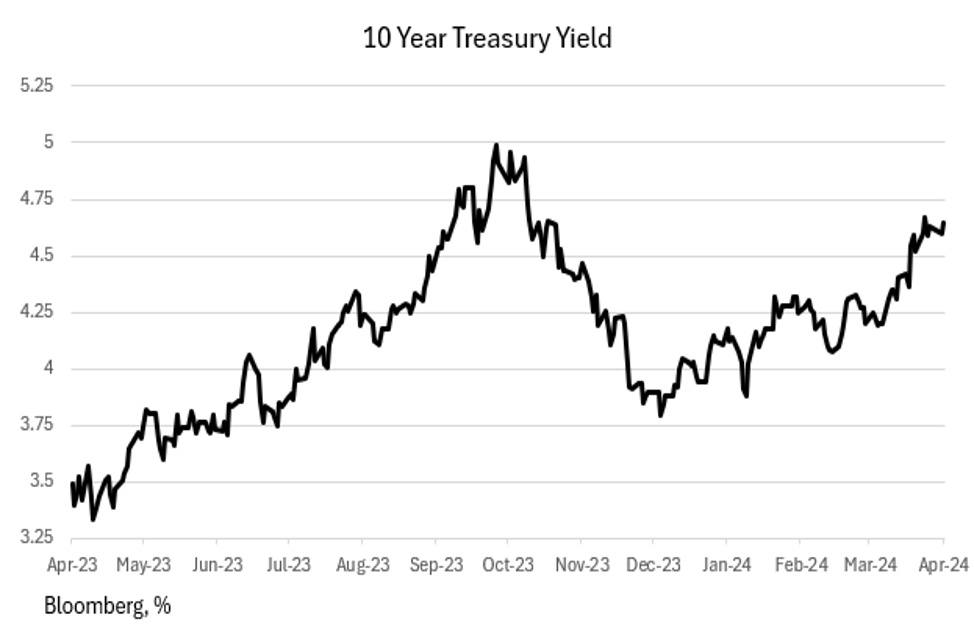The first quarter of the year saw a real GDP growth of 1.6%, lower than market expectations of 2.4% and a significant deceleration from the previous quarter. Consumption, a major driver of GDP, grew by 2.5%, also lower than the previous quarter. However, bond yields rose instead of falling, as slowing economic growth usually leads to lower interest rates. This was due to the core PCE deflator showing a higher than expected annual rate of 3.7%, with most of the inflation being concentrated in housing/utilities, financial services, and healthcare.
While the bond market predicts the Fed’s first rate cut in December at the earliest, some experts believe that disinflation is inevitable as the year progresses. Prices of goods actually deflated and services inflation is on a downswing, pulling overall inflation higher than the Fed’s 2% target. Consumption has been supported by excess savings from government stimulus in 2022, credit card borrowing, and a low savings rate, but these factors are now waning, leading to a potential downshift in consumer spending and economic growth.
A comparison between the US CPI and European HICP inflation calculations shows that the US inflation rate is already below the Fed’s 2% target when using the European methodology. The lag in the BLS’s rent index and inclusion of biased metrics like OER in the CPI contribute to a higher reported inflation rate. Despite economic indicators pointing towards a slowdown, the Fed has maintained a “higher for longer” stance on interest rates, potentially due to concerns about their credibility surrounding past inflation forecasts.
The banking sector faces challenges as Commercial Real Estate (CRE) values decline, making loans less secure, and a corporate refinancing wall looms ahead with higher interest rates. With increasing CRE defaults expected, there are concerns about more banking failures in the future. The manufacturing sector continues to struggle, with the latest surveys showing a contraction in activity, and retailers reporting consumer frugality and resistance to price increases.
Overall, analysts believe that the US economy is heading towards a soft landing or potentially a recession, which may require the Fed to lower rates significantly towards a “neutral” level. The timing of such rate cuts is uncertain, but the evidence of disinflation and economic slowing suggests that a shift in monetary policy might be necessary in the near future. There are concerns that if the Fed does not respond appropriately, it could lead to serious economic issues, particularly in the banking sector, and potentially result in a recession.













